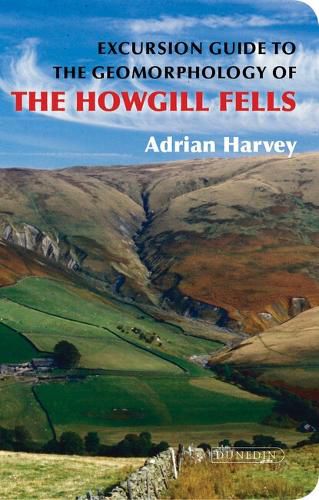Readings Newsletter
Become a Readings Member to make your shopping experience even easier.
Sign in or sign up for free!
You’re not far away from qualifying for FREE standard shipping within Australia
You’ve qualified for FREE standard shipping within Australia
The cart is loading…






The Howgill Fells in Cumbria, represent one of the most erosionally active landscapes in Britain. The bedrock geology, folded Silurian mudstones, is not especially well seen. The direct effects of Pleistocene glaciation are limited and not as well developed as in the neighbouring Lake District, although glacial meltwaters did have an important impact. However, it is in its post-glacial landscape that the Howgills are exceptional. The steep hillslopes of the headwater valleys are riddled by networks of erosional gullies, many active during the last few thousand years but now stabilised, others actively erosional now. The gully systems feed sediment downslope, locally forming large tributary-junction alluvial fans, elsewhere creating braided reaches within the stream channels.The Holocene sequence of hillslope gully erosion, alluvial fan deposition, and stream terrace aggradation and dissection is exceptionally well exhibited by numerous exposed sections through the sedimentary sequences. The modern active gully systems have been monitored for more than thirty years. The results of this long-term study illustrate two fundamental aspects of process geomorphology: first, the importance of coupling, i.e. linkages, within the geomorphic system, and secondly, the significance of magnitude/frequency relationships. Essentially, the Howgills form an excellent field laboratory for the study of modern processes and landforms as well as retaining the evidence for reconstructing the erosion/deposition sequence of the last few thousand years.The book is organised in two sections. A series of thematic chapters is followed by chapters dealing with details of recommended field excursions. The first excursion is a car-based excursion around the margins of the Howgills but the other excursions are all hiking excursions into the interior of the Howgills. One of the joys of the interior of the Howgills is that they form an upland block, within which there is no settlement, there are no roads and virtually no walls. You have to hike in to see, study and learn!The book is copiously illustrated by maps, diagrams and colour photographs.
$9.00 standard shipping within Australia
FREE standard shipping within Australia for orders over $100.00
Express & International shipping calculated at checkout
The Howgill Fells in Cumbria, represent one of the most erosionally active landscapes in Britain. The bedrock geology, folded Silurian mudstones, is not especially well seen. The direct effects of Pleistocene glaciation are limited and not as well developed as in the neighbouring Lake District, although glacial meltwaters did have an important impact. However, it is in its post-glacial landscape that the Howgills are exceptional. The steep hillslopes of the headwater valleys are riddled by networks of erosional gullies, many active during the last few thousand years but now stabilised, others actively erosional now. The gully systems feed sediment downslope, locally forming large tributary-junction alluvial fans, elsewhere creating braided reaches within the stream channels.The Holocene sequence of hillslope gully erosion, alluvial fan deposition, and stream terrace aggradation and dissection is exceptionally well exhibited by numerous exposed sections through the sedimentary sequences. The modern active gully systems have been monitored for more than thirty years. The results of this long-term study illustrate two fundamental aspects of process geomorphology: first, the importance of coupling, i.e. linkages, within the geomorphic system, and secondly, the significance of magnitude/frequency relationships. Essentially, the Howgills form an excellent field laboratory for the study of modern processes and landforms as well as retaining the evidence for reconstructing the erosion/deposition sequence of the last few thousand years.The book is organised in two sections. A series of thematic chapters is followed by chapters dealing with details of recommended field excursions. The first excursion is a car-based excursion around the margins of the Howgills but the other excursions are all hiking excursions into the interior of the Howgills. One of the joys of the interior of the Howgills is that they form an upland block, within which there is no settlement, there are no roads and virtually no walls. You have to hike in to see, study and learn!The book is copiously illustrated by maps, diagrams and colour photographs.